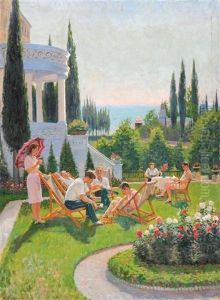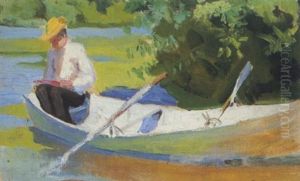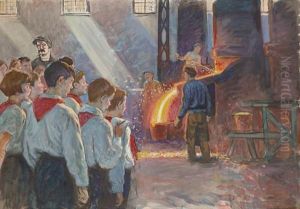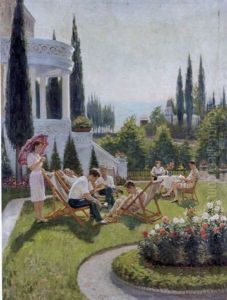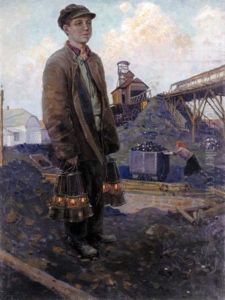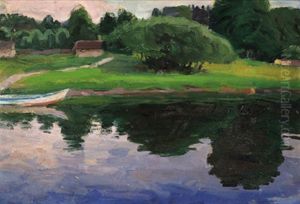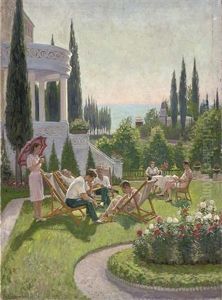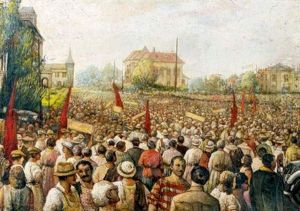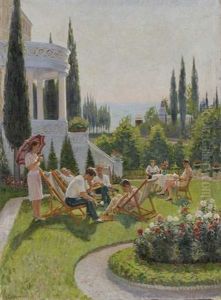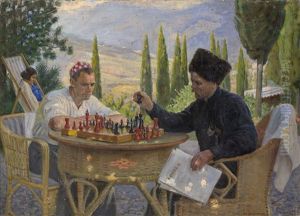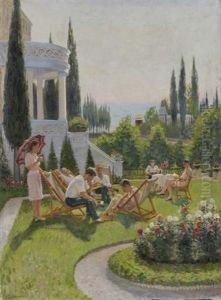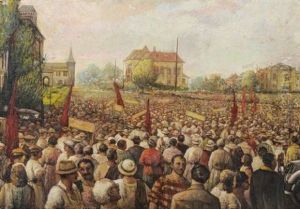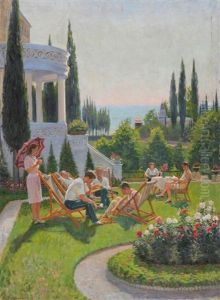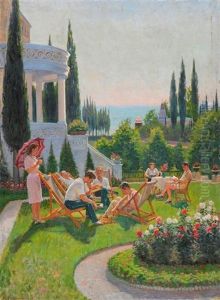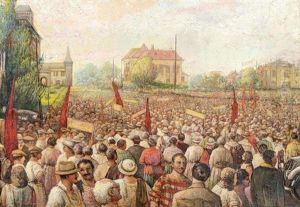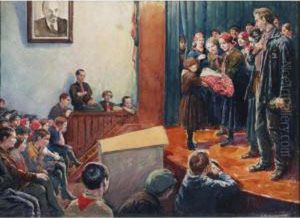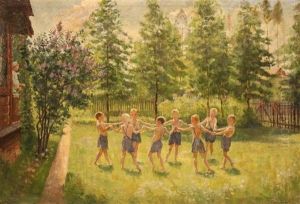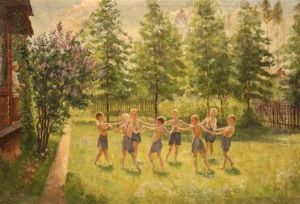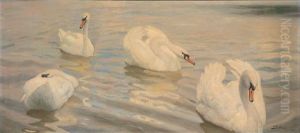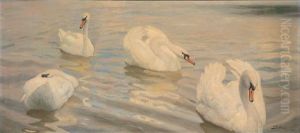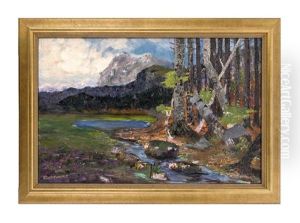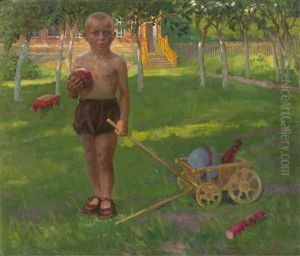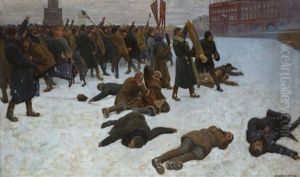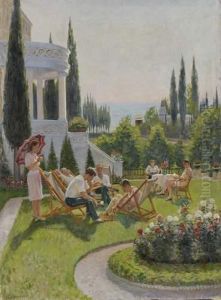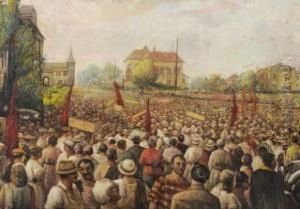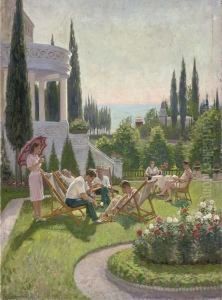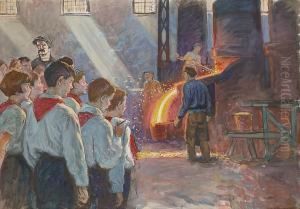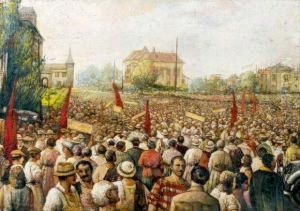Boris E. Vladimirsky Paintings
Boris Efimovich Vladimirsky was a notable Russian and Soviet painter, born in 1878 in Saratov, Russia. His artistic journey began in an era marked by significant upheaval and transformation, allowing him to witness firsthand the transition from the Russian Empire through the revolutionary period to the establishment of the Soviet Union. Vladimirsky's early education in art was rooted in traditional Russian painting, but his style and thematic focus evolved significantly over his career, reflecting the changing political and social landscape of his country.
Vladimirsky's work is characterized by its diversity, ranging from portraits and landscapes to thematic compositions that often depicted the lives of the working class, the peasantry, and later, the ideological triumphs of Soviet society. His ability to capture the essence of his subjects with empathy and realism won him recognition and accolades. He was a participant in many significant exhibitions throughout Russia and the Soviet Union, contributing to the cultural tapestry of the time.
During the Soviet era, Vladimirsky adapted his artistic practices to align with Socialist Realism, the state-mandated style that emphasized idealized representations of communist values and heroism. Despite the constraints this style imposed, he managed to retain a sense of individuality in his work, subtly infusing his paintings with personal insight and emotional depth. His portrayal of Soviet leaders, workers, and scenes of everyday life in this period serves as a valuable artistic document of the time, offering insights into the era's complex social and political narratives.
Vladimirsky's contribution to Soviet art was not limited to his own creations. He was also involved in educational initiatives, teaching and mentoring young artists, thereby influencing the next generation. His commitment to art as a means of social commentary and change remained evident throughout his career. Boris Efimovich Vladimirsky passed away in 1950, leaving behind a rich legacy of work that continues to be studied and appreciated for its historical significance and artistic merit. His paintings remain a testament to a tumultuous era, encapsulating the spirit of a nation amidst profound change.
